In the hotel and catering industry, offices, residences, and collectivities in general, common areas are the most valued spaces, and the first letter of introduction, where the quality and category of the establishment are perceived.
These places of constant traffic are often the first to be perceived by users and where feelings are created to evoke an ideal atmosphere of well-being and comfort. The cleanliness and good condition of the furniture and surfaces in these environments not only create a good impression, but also have a direct impact on the feeling of hygiene, quality and safety. Keeping these surfaces in optimum condition is more than a question of aesthetics; it is a sanitary and functional requirement.
For this reason, the cleaning and maintenance of hospitality furniture is a key factor in guaranteeing the safety, health, and customer satisfaction, while prolonging the furniture’s useful life and optimising conservation costs.
In the hotel business, the customer experience does not start at the front desk or in the room. It begins with the small details.
A well-kept chair, a sofa without stains or scratches, a table without veils or gnawing glasses. Gleaming glass, mirrors, and polished metal surfaces are details that make or break a hotel’s class. In the hospitality industry, where relaxing nights, rest and confidence are offered, the cleanliness and maintenance of furnishings and common surfaces are part of the final product.
It’s not just about what you see. Hotel furnishings must convey comfort, hygiene and durability, in all areas, from the lobby to the bathrooms to the room itself. Every texture and sheen on surfaces, whatever their nature, is a quality and craftsmanship reflection of the establishment, giving an accurate, distinguishable and memorable impression. This keeps customers coming back or passing on their good experience.
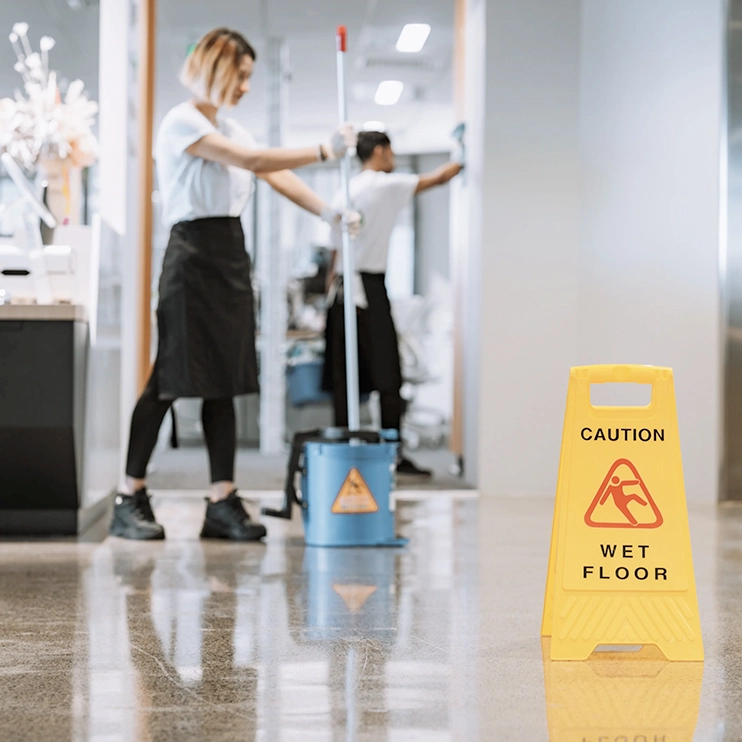
The surfaces found in these spaces are varied, and each requires specific care:
Decorative furniture: Armchairs, tables, worktops, counters, luggage racks.
Risks: Upholstery stains, scratches on tables, and dust on surfaces.
Recommended treatment.
Upholstery: Daily vacuuming + weekly or fortnightly dry foam cleaning.
Hard surfaces (wood, metal, marble): Apply neutral products to prevent damage to the surface, and avoid wax build-up.
Functional furniture: Beds, headboards, desks, chairs, wardrobes, curtains and electrical equipment such as a telephone or a television.
Common problems: Dust accumulation, fingerprints on metal surfaces, wear and tear due to misuse.
Recommended treatment:
Daily dusting and disinfection (microfibre cloths + multi-purpose products).
Weekly deep cleaning: mattresses (vacuuming), headboards (foam or steam cleaning). Odour and humidity control in upholstery and curtains.
Pro tip: Generating maintenance records per room reduces furniture turnover and improves internal audits.
Furniture: Worktops, cupboards, stands, mirrors.
Priorities: Rigorous and continuous disinfection, mould prevention, and limescale removal. Maintaining a record of disinfection in areas of high infectious risk, such as bathrooms, swimming pools, spas, and common leisure or relaxation areas, is key to keeping spaces safe and healthy.
Key products: Disinfectants with bactericidal, fungicidal and virucidal action, anti-limescale cleaners, glass cleaners and neutral cleaners.
Technique: Never use abrasive sponges on chrome surfaces and always dry surfaces after cleaning with colour-coded cloths to avoid cross-contamination.
Furniture at risk: Chairs, tables, bars, showcases.
High frequency of cleaning: Between shifts, before and after service.
Tip: Invest in furniture that is easy to clean without the need for complex tools to dismantle and access nooks and crannies.
Upholstered corridors or carpets require specialised equipment. Cleaning wooden floors or other delicate surfaces with neutral products.
Contact surfaces (handrails, push-button panels, side tables) should be cleaned 2-3 times per day at medium/high occupancy.
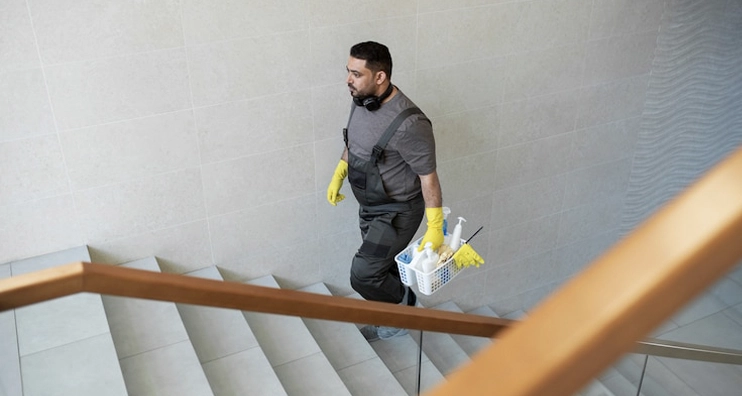
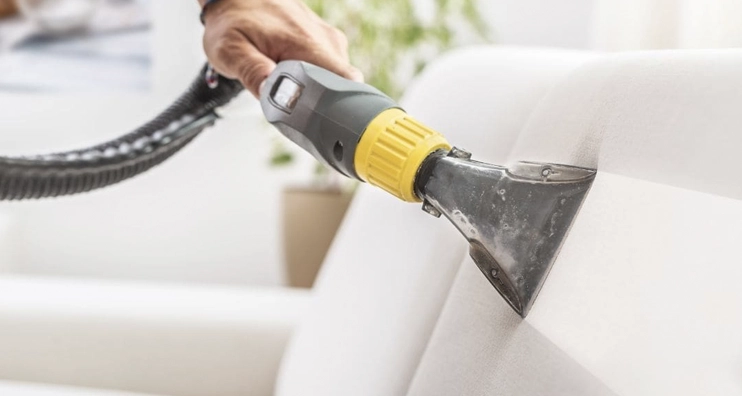
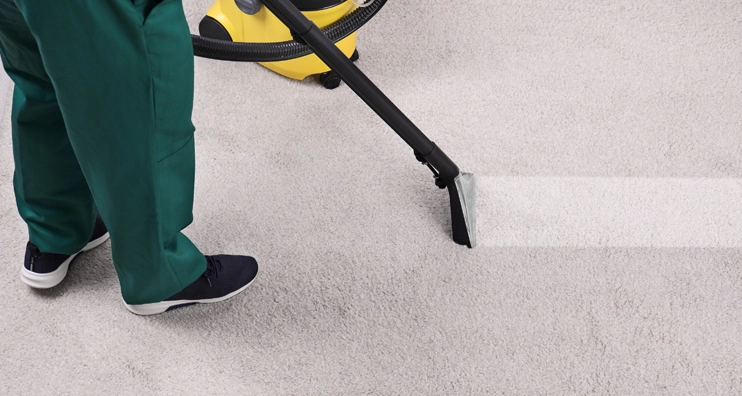
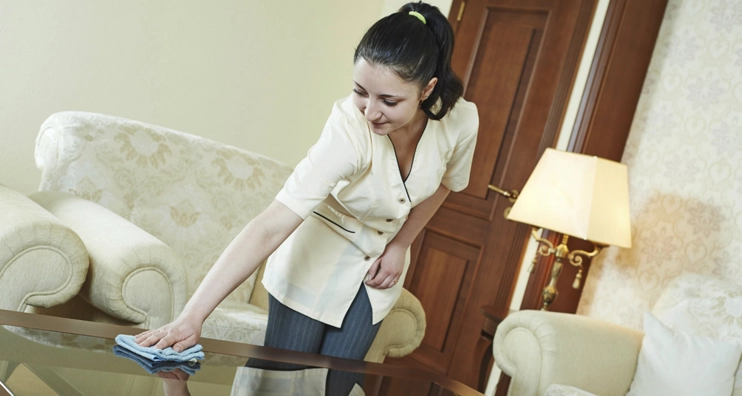
Average estimate in a 3 to 5-star hotel (per stay/year):
| Concept | Estimated cost (€/year) |
|---|---|
| Daily cleaning of surfaces | 350 – 600 € |
| Deep maintenance (upholstery) | 150 – 250 € |
| Products and consumables | 200 – 400 € |
| Replacement due to damage or wear | 300 – 800 € |
A poorly maintained room can lead to 40% higher replacement costs in the medium term.
A hotel that takes care of its surfaces and furnishings communicates its quality standard without words.
It is not about avoiding complaints, it is about building a reputation through exceptional care in hygiene and furniture maintenance. This reality in the hospitality industry is ultimately a way to build trust, loyalty and better reviews.
The guest will not remember which media you used, but he will remember if the sofa smelled clean, if the chair was in good condition, or if the bathroom sparkled. That is the difference between a functional accommodation and an unforgettable experience. Therefore, professional furniture cleaning should be integrated into the hotel’s maintenance strategy. With proper protocols, ongoing training and appropriate products, it is possible to extend the life of the furniture and raise the perception of service without increasing operational expenditure.
S.A. PRODER has an extensive range of products for surface hygiene and disinfection, as well as for upholstery cleaning, descaling and ready-to-use multi-purpose cleaners.
Concentrated, super-concentrated and ultra-concentrated bag-in-box by ECOSAFETY® y monodosis ECO ONE® single-dose products to cover all cleaning needs in large hotel establishments, residences and communities in general.
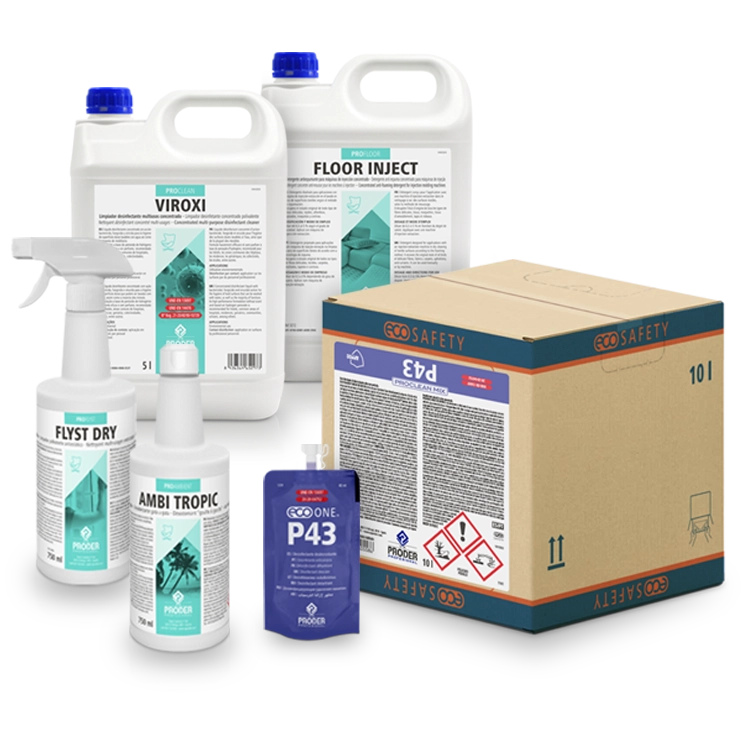
If you need more information about our products, systems and services for professional hygiene and disinfection.
Click hereRellena este pequeño formulario, y te enviaremos el pase de
asistencia al II FÓRUM PRODER.